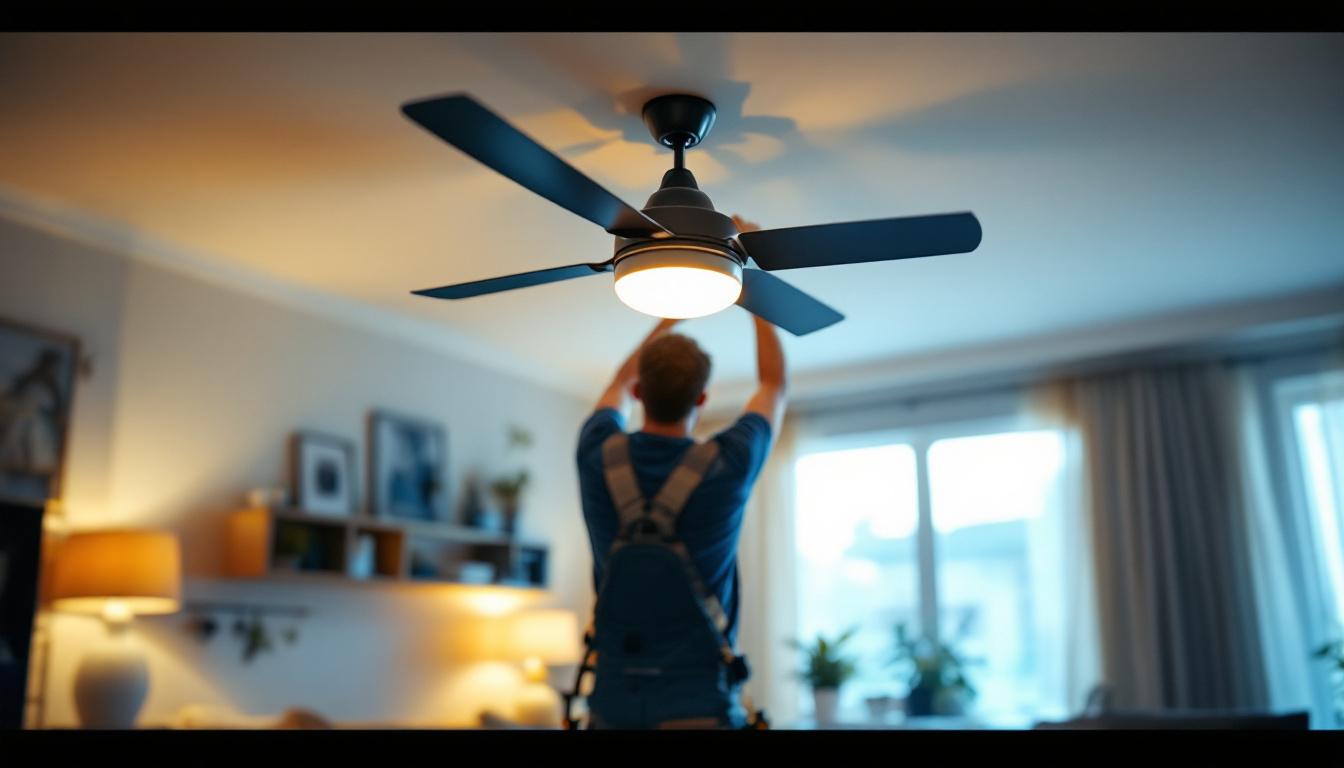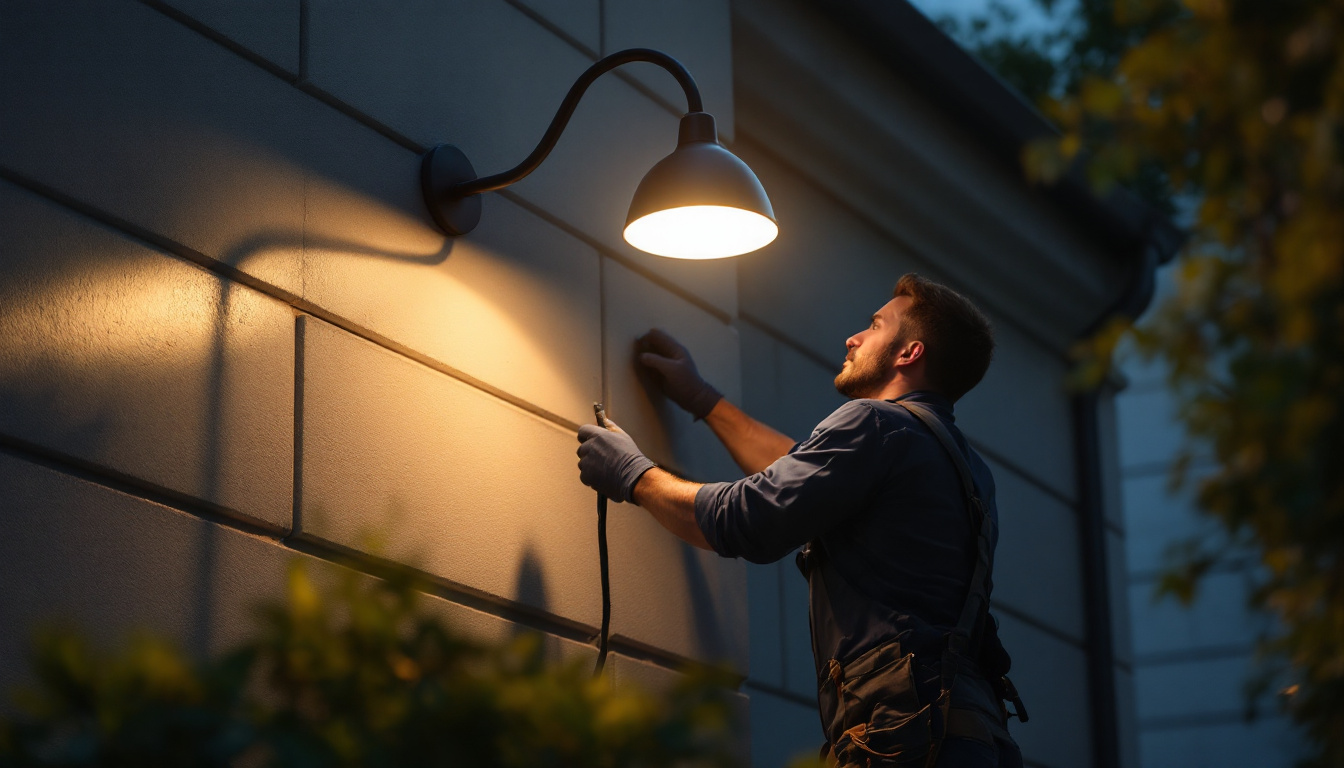
In the realm of residential lighting, efficiency is a key concern for contractors aiming to deliver value to their clients. One often overlooked element that can significantly enhance energy efficiency is the ceiling fan. While primarily associated with air circulation, ceiling fans also play a pivotal role in improving the overall efficiency of lighting systems. This article explores how ceiling fans contribute to energy savings, enhance lighting effectiveness, and ultimately benefit lighting contractors in their projects.
Ceiling fans are not just aesthetic additions to a room; they serve a functional purpose that can lead to substantial energy savings. By understanding the mechanics of how ceiling fans operate, lighting contractors can better integrate them into their designs.
Ceiling fans create a wind-chill effect that can make a room feel cooler than it actually is. This means that during warmer months, homeowners can set their air conditioning to a higher temperature, relying on the fan to circulate cool air. This simple adjustment can lead to significant reductions in energy consumption.
Conversely, in colder months, many ceiling fans come equipped with a reverse function. This allows the fan blades to rotate in the opposite direction, pushing warm air that has risen to the ceiling back down into the living space. By promoting even temperature distribution, ceiling fans help maintain comfort without over-relying on heating systems. This dual functionality not only enhances comfort but also extends the lifespan of HVAC systems, as they do not have to work as hard to maintain desired temperatures.
Lighting contractors often face the challenge of ensuring that their installations are not only visually appealing but also energy-efficient. Ceiling fans can enhance the effectiveness of lighting fixtures by improving the distribution of light throughout a room. The gentle airflow created by the fan can help eliminate dark spots and create a more uniform illumination.
Additionally, the strategic placement of ceiling fans can reduce the need for multiple lighting sources. In rooms where the fan is positioned centrally, it can help amplify the light from a single fixture, allowing for a more minimalist approach to lighting design. This not only streamlines the aesthetic but also contributes to energy savings by minimizing the number of bulbs needed. Furthermore, many modern ceiling fans come with integrated LED lighting options, which are known for their efficiency and longevity, further enhancing the overall energy performance of a space.
Moreover, the aesthetic versatility of ceiling fans allows them to fit seamlessly into various design styles, from contemporary to rustic. This adaptability means that they can be incorporated into a wide range of projects, allowing contractors to offer clients both functionality and style. The ability to select from various finishes, blade styles, and sizes ensures that there is a ceiling fan suitable for every room, enhancing the overall ambiance while promoting energy efficiency.
When it comes to selecting ceiling fans, lighting contractors should consider several factors that can influence efficiency and performance. The right choice can enhance both the functionality of the fan and the overall lighting design.
The size of the ceiling fan is crucial for ensuring optimal air circulation. A fan that is too small for a room will struggle to move air effectively, while one that is too large can overpower the space. Typically, a fan with a blade span of 42 to 52 inches is suitable for most residential rooms. However, larger spaces may require fans with longer blades to achieve the desired airflow.
Blade design also plays a significant role in efficiency. Fans with fewer blades may move air faster, while those with more blades can create a gentler breeze. Understanding the balance between these factors can help contractors make informed decisions that enhance both comfort and energy efficiency. Additionally, the pitch of the blades—typically ranging from 12 to 15 degrees—can affect airflow as well. A steeper pitch can increase the fan’s ability to circulate air, making it an important consideration for contractors aiming to maximize performance.
Modern ceiling fans often come equipped with energy-efficient motors that consume less electricity while providing the same level of performance as traditional models. When selecting fans for residential projects, lighting contractors should prioritize those with Energy Star ratings or similar certifications. These fans not only reduce energy consumption but also contribute to a more sustainable building design.
Moreover, incorporating smart technology into ceiling fans can further enhance their efficiency. Features such as remote controls, timers, and smartphone integration allow homeowners to customize their fan settings, ensuring that they are only in use when needed. This not only enhances convenience but also promotes energy savings, as users can easily adjust settings based on their daily routines. Furthermore, some advanced models are equipped with sensors that can detect room occupancy and adjust fan speed accordingly, ensuring that energy is not wasted in unoccupied spaces. This level of adaptability makes modern ceiling fans a valuable addition to any energy-conscious home.
For lighting contractors, the integration of ceiling fans into lighting designs can elevate both functionality and aesthetic appeal. When done correctly, this combination can create a harmonious environment that meets the needs of homeowners.
Ceiling fans come in a variety of styles, finishes, and colors, allowing for seamless integration into any design scheme. Whether the goal is a modern, minimalist look or a more traditional aesthetic, there is a ceiling fan to match. Lighting contractors should consider the overall theme of the room when selecting fans, ensuring that they complement the lighting fixtures and other design elements.
Additionally, the placement of ceiling fans can enhance the visual impact of lighting installations. For instance, positioning a fan directly above a dining table can create a focal point that draws attention to the lighting fixture, enhancing the overall ambiance of the space. Moreover, the choice of materials for both the fan and the lighting can further unify the design. For example, a sleek metal fan paired with industrial-style pendant lights can create a cohesive look that resonates with contemporary tastes, while a wooden fan can harmonize beautifully with rustic or farmhouse-style lighting.
Another important aspect of integrating ceiling fans with lighting designs is the coordination of controls. Many modern ceiling fans come with integrated lighting options, allowing homeowners to control both the fan and the light from a single switch or remote. This not only simplifies the user experience but also contributes to energy efficiency by allowing users to adjust both elements simultaneously.
Lighting contractors should educate clients on the benefits of these integrated systems, emphasizing how they can enhance comfort and convenience while reducing energy consumption. By offering solutions that streamline control, contractors can position themselves as knowledgeable professionals who prioritize client satisfaction. Furthermore, smart home technology has made significant strides in recent years, with many ceiling fans now compatible with home automation systems. This allows homeowners to control their fans and lights via smartphone apps or voice commands, adding a layer of convenience and modernity that can be very appealing. Highlighting these advanced features can help contractors appeal to tech-savvy clients looking for the latest in home innovation.
Incorporating ceiling fans into residential projects offers numerous benefits for lighting contractors. Beyond the immediate advantages of energy efficiency and improved lighting, there are long-term gains that can enhance a contractor’s reputation and client relationships.
Homeowners are increasingly seeking energy-efficient solutions that not only reduce their utility bills but also enhance their comfort. By recommending ceiling fans as part of their lighting designs, contractors can demonstrate their commitment to providing sustainable and effective solutions. This proactive approach can lead to higher client satisfaction and increased referrals.
Moreover, when clients experience the benefits of improved airflow and lighting quality, they are more likely to appreciate the contractor’s expertise and consider them for future projects. This can foster long-term relationships that extend beyond a single installation.
In a competitive market, lighting contractors must differentiate themselves from others. Offering ceiling fan integration as part of lighting design services can serve as a unique selling point. By showcasing knowledge of both lighting and airflow, contractors can position themselves as comprehensive solution providers, appealing to a broader range of clients.
Additionally, as energy efficiency becomes a more significant concern for homeowners, contractors who can provide solutions that address these issues will be better positioned to win contracts. Emphasizing the benefits of ceiling fans in marketing materials can attract environmentally conscious clients who prioritize sustainable living.
Residential ceiling fans are a powerful tool for lighting contractors looking to enhance energy efficiency and client satisfaction. By understanding the role of ceiling fans in air circulation, temperature regulation, and lighting effectiveness, contractors can make informed decisions that benefit both their clients and their businesses.
From selecting the right fan size and motor to integrating them seamlessly with lighting designs, the potential for improved efficiency is significant. As the demand for energy-efficient solutions continues to grow, lighting contractors who embrace the benefits of ceiling fans will not only enhance their service offerings but also secure their position as leaders in the industry.
Incorporating ceiling fans into residential lighting projects is not merely an afterthought; it is a strategic decision that can yield substantial benefits. By prioritizing efficiency, aesthetics, and client satisfaction, lighting contractors can create spaces that are not only functional but also enjoyable for homeowners.
Ready to elevate your lighting designs with the efficiency and style of premium ceiling fans? Look no further than LumenWholesale, where we provide lighting contractors with the highest quality, spec-grade lighting products at unbeatable wholesale prices. Say goodbye to local distributor markups and hello to a vast selection of reliable, high-performance lighting that meets the strictest industry standards. Plus, with free shipping on bulk orders, you can stock up on all your lighting needs without any hidden fees. Don’t compromise on quality or value; choose LumenWholesale for the perfect blend of affordability and convenience. Enhance your next project with Wholesale Lighting at the Best Value today.

Discover the transformative power of 5000K lighting through real-world success stories from leading contractors.

Explore the transformative role of goose neck lights in lighting contractors’ projects.

Discover the essential guide for lighting contractors, exploring top lighting supplies, innovative solutions, and expert tips to illuminate any project with precision and style..

Discover essential insights and expert tips for lighting contractors on optimizing hospital lighting.